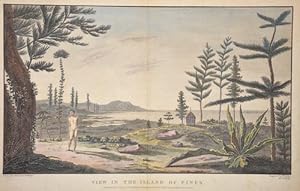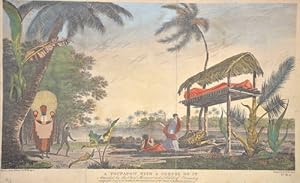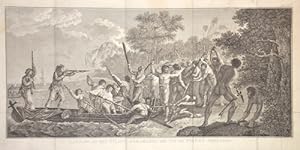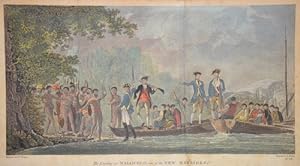hodges william london (6 Ergebnisse)
FeedbackSuchfilter
Produktart
- Alle Product Types
- Bücher (Keine weiteren Ergebnisse entsprechen dieser Verfeinerung)
- Magazine & Zeitschriften (Keine weiteren Ergebnisse entsprechen dieser Verfeinerung)
- Comics (Keine weiteren Ergebnisse entsprechen dieser Verfeinerung)
- Noten (Keine weiteren Ergebnisse entsprechen dieser Verfeinerung)
- Kunst, Grafik & Poster (6)
- Fotografien (Keine weiteren Ergebnisse entsprechen dieser Verfeinerung)
- Karten (Keine weiteren Ergebnisse entsprechen dieser Verfeinerung)
- Manuskripte & Papierantiquitäten (Keine weiteren Ergebnisse entsprechen dieser Verfeinerung)
Zustand
- Alle
- Neu (Keine weiteren Ergebnisse entsprechen dieser Verfeinerung)
- Antiquarisch (6)
Einband
- alle Einbände
- Hardcover (Keine weiteren Ergebnisse entsprechen dieser Verfeinerung)
- Softcover (1)
Weitere Eigenschaften
- Erstausgabe (Keine weiteren Ergebnisse entsprechen dieser Verfeinerung)
- Signiert (2)
- Schutzumschlag (Keine weiteren Ergebnisse entsprechen dieser Verfeinerung)
- Angebotsfoto (6)
Gratisversand
- Kostenloser Versand nach Deutschland (Keine weiteren Ergebnisse entsprechen dieser Verfeinerung)
Verkäuferbewertung
-
Resolution Bay in the Marquesas.
Verlag: Artist: Hodges William ( - 1797 ) London ; issued in: Paris; - William Hodges (1744- 1797 ) was an English painter Hodges accompanied Captain James Cook aboard the Resolution on his second voyage to the South Seas including Tahiti the Tonga Islands New Zealand Easter Island and Antarctica During his stay on board Hodges mainly made landscape sketches but also some portraits of expedition members as well as special personalities of the visited islands His landscape paintings usually also include elements showing the way of life of the people visited His sketches were further worked on after his return to London Hodges obtained employment for some time with the Admiralty which allowed him to produce oil paintings from the sketches and to supe, 1744
Anbieter: Antique Sommer& Sapunaru KG, München, Deutschland
Kunst / Grafik / Poster
Technic: Copper print, colorit: original colored, condition: Minor stains, size (in cm): 23 x 37,5 cm; - View showing Resolution Bay in the Marquesas Islands with locals on their boats (pirogue). From Alexander Hogg's A New Authentic and Complete Collection of Voyages Round the World. Engraved by Benjamin Thomas, Pouncy. After William Hodges. Published by Lane & Thos Cadell.; History: The Society Islands in French Polonesia. The archipelago is suspected to have been named by Captain James Cook during his first voyage in 1769, supposedly in honour of the Royal Society, the sponsor of the first British scientific survey of the islands. However, Cook himself stated in his journal that he called the islands Society as they lay contiguous to one another.
-
View in the Island of Pines.
Verlag: Artist: Hodges William ( - 1797 ) London ; issued in: London; - William Hodges (1744- 1797 ) was an English painter Hodges accompanied Captain James Cook aboard the Resolution on his second voyage to the South Seas including Tahiti the Tonga Islands New Zealand Easter Island and Antarctica During his stay on board Hodges mainly made landscape sketches but also some portraits of expedition members as well as special personalities of the visited islands His landscape paintings usually also include elements showing the way of life of the people visited His sketches were further worked on after his return to London Hodges obtained employment for some time with the Admiralty which allowed him to produce oil paintings from the sketches and to sup, 1744
Anbieter: Antique Sommer& Sapunaru KG, München, Deutschland
Kunst / Grafik / Poster
Technic: Copper print, colorit: original colored, condition: Minor stains, size (in cm): 24,5 x 38,5 cm; - View of a bay on Pine Island in New Caledonia. Engraved by W. Byrne, edited by Strahan.; History: The settlement of New Caledonia probably took place around 1500 BC by people of the Lapita culture. The descendants of these tribes today form the indigenous people of the Kanaks. In the period from the 11th century to the 18th century, Polynesians repeatedly reached the islands of New Caledonia, as they were in search of new land. The islands were discovered by the Europeans only in the course of the 18th century. In 1774, during his second voyage to the South Seas, James Cook became the first European to set foot on the islands. He gave them their present name because the appearance of the northeast of the main island reminded him of Scotland, which had been called Caledonia by the Romans. Cook explored the island landscape over nine days without any incidents. He was followed in 1792 by a Frenchman named Joseph Bruny d'Entrecasteaux. The first Europeans to settle on the islands were whalers and timber (sandalwood) traders. They were followed by missionaries in the 19th century.
-
A Toupapow with a Corpse on it Attended by the Chief Mourner in his Habit of Ceremony.
Verlag: Artist: Hodges William ( - 1797 ) London ; issued in: London; - William Hodges (1744- 1797 ) was an English painter Hodges accompanied Captain James Cook aboard the Resolution on his second voyage to the South Seas including Tahiti the Tonga Islands New Zealand Easter Island and Antarctica During his stay on board Hodges mainly made landscape sketches but also some portraits of expedition members as well as special personalities of the visited islands His landscape paintings usually also include elements showing the way of life of the people visited His sketches were further worked on after his return to London Hodges obtained employment for some time with the Admiralty which allowed him to produce oil paintings from the sketches and to sup, 1744
Anbieter: Antique Sommer& Sapunaru KG, München, Deutschland
Kunst / Grafik / Poster
Technic: Copper print, colorit: colored, condition: little stains, size (in cm): 23,5 x 37,5 cm; - View shows a body laid out in Tahiti, accompanied by the mourning head in his ceremonial robe. Edited by W. Strahan, engraved by W. Woollett, drawn after Hodges.; History: Tahiti was settled - like the other Society Islands - around 200 BC from Tonga and Samoa. It is not conclusively clear which European can be considered the "discoverer" of Tahiti. The Portuguese Pedro Fernández de Quirós sighted an inhabited island in 1606, which he called Sagittaria and which, according to some chroniclers, could have been Tahiti. However, there is no confirmation of this. Today, the Englishman Samuel Wallis is considered the first European to set foot on Tahiti in 1767. The visits of James Cook have remained in the consciousness of Europeans. In April 1769 he anchored with his ship Endeavour in Matavai Bay, about 10 km north of today's Papeete. Traveling with Cook was botanist Joseph Banks, who conducted extensive botanical studies during his three-month stay. His findings led to the fateful 1787 voyage of the Bounty to Tahiti, which was commissioned by the British Admiralty to William Bligh.
-
Trombes de mer aupres de la Nouvelle Zelande.
Verlag: Artist: Hodges William ( - 1797 ) London ; issued in: London; - William Hodges (1744- 1797 ) was an English painter Hodges accompanied Captain James Cook aboard the Resolution on his second voyage to the South Seas including Tahiti the Tonga Islands New Zealand Easter Island and Antarctica During his stay on board Hodges mainly made landscape sketches but also some portraits of expedition members as well as special personalities of the visited islands His landscape paintings usually also include elements showing the way of life of the people visited His sketches were further worked on after his return to London Hodges obtained employment for some time with the Admiralty which allowed him to produce oil paintings from the sketches and to sup, 1744
Anbieter: Antique Sommer& Sapunaru KG, München, Deutschland
Kunst / Grafik / Poster
Technic: Copper print, colorit: original colored, condition: Perfect condition, size (in cm): 22 x 36,5 cm; - Engraving showing William Hodges observing the waterspouts at Cape Stephens, Marlborough. From the French edition of Cook's second voyage, which first appeared in: Wales & Bayly, The Original Astronomical Observations made in the course of a Voyage towards the South Pole, and round the world, in His Majesty's Ships the Resolution and Adventure. This report provided the astronomical information for Cook's second voyage. The title of the English version was: Waterspouts in Cook's Straits in New Zealand. Engraved by Benard.; History: New Zealand was discovered by Polynesians around the end of the 13th century, or at the latest in the first half of the 14th century, and was settled in several waves of immigration. The descendants of the first immigrants founded the M_ori culture. The first M_ori to reach the land found no mammals. To feed themselves, they first hunted the moa, a flightless bird remotely similar to the African ostrich. The first European to set eyes on New Zealand was the Dutch navigator Abel Tasman. His mission was to find the "Great Southern Land" because valuable raw materials were suspected there. On his voyage, in 1642, he discovered a "great high land" on the South Island, today's West Coast region. He was not sure and suspected that he had discovered another piece of Staten Landt coast. When he went to Golden Bay in what is now the Tasman region to explore the land up close, he had his first bloody encounter with the "aborigines" in which four Dutch sailors were killed. The "discoverer of New Zealand" never set foot on New Zealand soil. A year later, when an expedition under Hendrik Brouwer determined that the coastal strip found by Tasman did not belong to Staten Landt, the country was named Nova Zeelandia (Latin) or Nieuw Zeeland (Dutch), in reference to Australia, which had been called Nova Hollandia or Nieuw Holland. Like Tasman, the British captain James Cook was to find a suspected southern continent. In 1769, Cook's ship Endeavour, coming from Tahiti, encountered New Zealand at the southwestern point of the bay called Poverty Bay. After first hostile encounters, but then also successful approaches with M_ori, Cook first circumnavigated the North Island and, after a longer stay in the Marlborough Sounds, the South Island and was thus able to prove that New Zealand was islands and not part of a continent. Cook and the scientists accompanying him began to map the country thoroughly, they explored flora and fauna extensively and gathered information about the M_ori. Only a few weeks after Cook, Jean François Marie de Surville also reached the islands. In the following years, mainly whalers, sealers and later missionaries migrated to New Zealand. These maintained pronounced contacts with the M_ori. The two parties engaged in lively trade with each other, and some Europeans also lived together with the M_ori.
-
Landing op het Eiland Erramanga, een van de Nieuwe Hebriden.
Verlag: Artist: Hodges William ( - 1797 ) London ; issued in: ; - William Hodges (1744- 1797 ) was an English painter Hodges accompanied Captain James Cook aboard the Resolution on his second voyage to the South Seas including Tahiti the Tonga Islands New Zealand Easter Island and Antarctica During his stay on board Hodges mainly made landscape sketches but also some portraits of expedition members as well as special personalities of the visited islands His landscape paintings usually also include elements showing the way of life of the people visited His sketches were further worked on after his return to London Hodges obtained employment for some time with the Admiralty which allowed him to produce oil paintings from the sketches and to supervise, 1744
Anbieter: Antique Sommer& Sapunaru KG, München, Deutschland
Kunst / Grafik / Poster Signiert
Technic: Copper print, colorit: black/white, condition: Perfect condition, size (in cm): 21,5 x 44,5 cm; - View showing Captain Cook's landing on Erramanga Island, one of the New Hebrides. After the original drawing by Wiliam Hodges.; History: New Hebrides was the colonial name for the group of islands in the South Pacific now Vanuatu. Native people had inhabited the islands for three thousand years before the first Europeans arrived in 1606 from a Spanish expedition led by the Portuguese navigator Pedro Fernandes de Queirós. The islands were colonized by both the British and the French in the 18th century shortly after Captain James Cook's visit, and the two countries eventually signed an agreement that turned the islands into an Anglo-French housing estate that would include the New Hebrides in divided into two separate communities: one Anglophone and one Francophone. This gap continued after independence, with schools teaching in either one language or the other and with different political parties.
-
The Landing at Mallicolo, one of the New Hebrides.
Verlag: Artist: Hodges William ( - 1797 ) London ; issued in: London; - William Hodges (1744- 1797 ) was an English painter Hodges accompanied Captain James Cook aboard the Resolution on his second voyage to the South Seas including Tahiti the Tonga Islands New Zealand Easter Island and Antarctica During his stay on board Hodges mainly made landscape sketches but also some portraits of expedition members as well as special personalities of the visited islands His landscape paintings usually also include elements showing the way of life of the people visited His sketches were further worked on after his return to London Hodges obtained employment for some time with the Admiralty which allowed him to produce oil paintings from the sketches and to sup, 1744
Anbieter: Antique Sommer& Sapunaru KG, München, Deutschland
Kunst / Grafik / Poster Signiert
Technic: Copper print, colorit: colored, condition: Tear on lower part perfectly restored, some browning, size (in cm): 26 x 46,5 cm; - View showing Captain Cook's landing on Mallicolo, an island in the New Hebrides. Drawn after William Hodges, engraved by J. Bafire.; History: New Hebrides was the colonial name for the group of islands in the South Pacific now Vanuatu. Native people had inhabited the islands for three thousand years before the first Europeans arrived in 1606 from a Spanish expedition led by the Portuguese navigator Pedro Fernandes de Queirós. The islands were colonized by both the British and the French in the 18th century shortly after Captain James Cook's visit, and the two countries eventually signed an agreement that turned the islands into an Anglo-French housing estate that would include the New Hebrides in divided into two separate communities: one Anglophone and one Francophone. This gap continued after independence, with schools teaching in either one language or the other and with different political parties.







